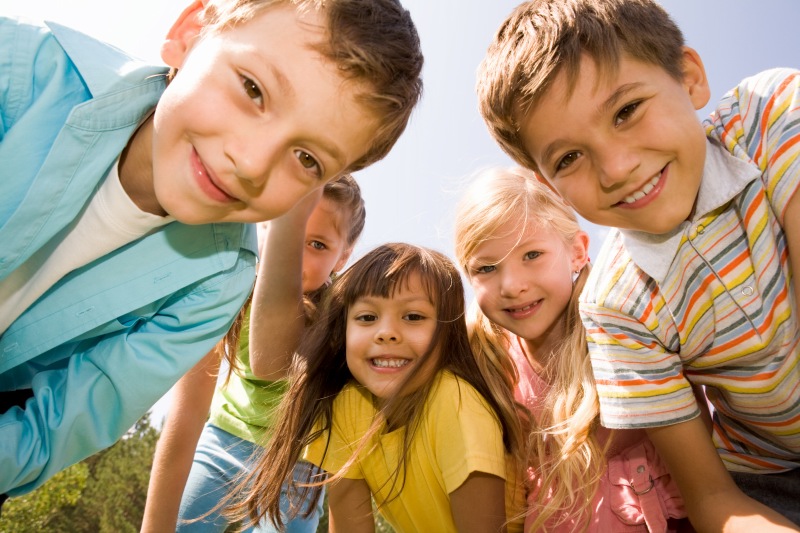Uncategorized
It Happened Again. That’s Why I Believe You’ll Share This Post…
 It happened again.
It happened again.
An adult tried to lure a child into a car.
In broad daylight.
A couple times a year, this scenario (or a similar version of it) happens in my community. It happened just the other day.
If we did the math on a larger scale, we can’t help but know that such scenarios happen daily across the country (and globally, even).
I know I normally blog about marriage, but this topic of protecting children is near and dear to my heart so I am veering in a different direction with my post today.
While some attempts to take or sexually abuse children do not end tragically, the reality is that many do (whether it be the scars of repeated abuse or in more extreme cases, children disappearing indefinitely or even being killed).
There is no way to predict these events. They are random.
Sure, we may be able to find common traits that show up in predators, but we do not know when or where those adults will maliciously target a child.
Our best defense is to proactively and regularly equip children and teens to quickly size up a situation for what it is.
As much as we would all like to believe these things “would never happen to my child” or “would never happen in my community,” we have to remember that victims and their families likely had those same thoughts.
Please remember that equipping children with the skills they need is not robbing them of their childhood or pushing them into panic mode.
A better way to look at it is that when we specifically, regularly and age-appropriately help kids build the skills they need, we are doing what we can to protect their childhood and build their confidence.
When it comes to protecting children from abduction and abuse, the below 5 conversation points are the best place to start:
1. Adults wanting to harm children will use what works to lure that particular child or teen.
We often think of “do you want some candy” or “will you help me find my puppy” as the calling cards of sexual predators. And sometimes those are the exact lines they use, as cliche as they may sound.
BUT I believe predators tend to be more preceptive than that.
For example, when my older son was about 11 — an age when boys typically become increasingly interested in video games — I told him that someone trying to take advantage of him may say something like this:
“Hey dude, my buddy works at a game store and he had all these extra Play Station games they had to clear off the shelves. There’s no way I can use them all. Want to come check them out? I have them right over here. You can have them if you want.”
Do you see how something like that would be more effective with an adolescent boy than “help me find my puppy”?
Role play with your kids.
Figure out what most appeals to them (rainbow looms, electronics, animals, trips to amusement parks, iTune gift cards, clothing, etc.).
And ask them what they will do if someone “promises” to give them those things. Teach them that if anyone wants to give them something, they should tell the person, “I have to go check with my parents first.”
2. Predators rarely look like dangerous strangers.
Statistics tell us that when young people are sexually abused, it is often by someone they know (a family member, neighbor, coach, teacher).
BUT even if it is a complete stranger, rarely does that stranger look “dangerous.”
Remind children that what someone looks like is not as important as what the person actually says and does. Someone could look like a super nice clean cut person, but still not behave appropriately around children.
3. Remind children to trust their gut and do whatever they can to get out of a situation.
Kids need to know that it’s okay to trust their gut. If something doesn’t “feel right,” then it likely is not right.
They need to LISTEN to that feeling and do what they can to get out of the situation.
Tell them it’s okay to run. Tell them it’s okay to scream.
Tell them it’s okay to make something up that may not be completely accurate, but will give the predator second thoughts about pursuing them (“my mom will be here any minute” or “my friends are waiting for me and if I don’t come they will tell someone right away”).
4. The buddy system works.
Make sure your children are rarely alone, particularly in public. Whether they are walking to and from school or are at a gathering place where kids like to go (malls, movies, swimming pools, etc.), insist on the buddy system.
And if a child ever gets lost, tell them not to panic, but to first look for a mother with a stroller or child and to tell that mother, “I need help.”
Why a mother rather than a store clerk or employee? I’m not saying we cannot trust employees. What I’m saying is that I would rather first place my bet on a mom’s heart and instinct to make sure a child is safe.
If they can’t find a mother, then look for an employee or another adult.
If the child is in a neighborhood and someone tries to approach them, tell them to run the opposite way the car is facing, preferably to a house or through a yard or toward a building where there will be people.
5. Children need to know they can tell a safe adult at any point.
We assume that if someone tries to hurt a child or actually does hurt them, the child will tell a safe adult right away.
Yes, that is what is ideal, but children also need to know that even if the abuse has gone on for awhile, they can STILL come to a safe adult without fear of judgment or repercussion.
This is so important because if a predator has been abusing the child or teen for awhile (weeks, months, years), the predator is likely playing the shame card with the young person, saying things like,
“You can’t tell anyone now. Look how long it’s been going on. I think you kind of like it. They’ll be mad at you for not telling them earlier.”
Predators are manipulative.
And they will use coercion and mental manipulation to its fullest to convince a child the abuse is their fault or that what is happening is a “special secret.”
They may even go to the extreme of telling the child that the parent knows about what is going on and is fine with it.
When an adult maliciously preys upon a child, it is NEVER the child’s fault. Young people need to know this. And they need you as their safe adult to remind them to tell you at any point someone has said or done something that made them feel uncomfortable.
It is devastating on so many levels that we have to even be concerned about adults hurting children. Let’s, though, not become paralyzed in that concern.
Instead, let’s wisely and proactively give our kids the skills they need to keep themselves safe.
If you have children in your life you love, whether they are your own or those of friends and family members, please share this post with the adults in their life. I humbly thank you for that.
You never know the difference it could make.
For more on this, check out my post 8 Things Your Kids Must Know About Sexual Predators.
And when it comes to talking to your kids about sex, you may want to take a look at my post The 10 Worst Mistakes You Can Make When Talking to Your Kids About Sex.
Copyright 2014, Julie Sibert. Intimacy in Marriage Blog.



I would add to have your child take a children’s self-defense class or some form of karate. My MOPS group had a self-defense teacher and karate instructor as our speaker this week, and she told us that her studio teaches children’s self-defense in addition to karate.
Thank you for this advice. I have a 3 year old son who has never met a stranger. Even in infancy he was fine being passed from stranger to stranger and never cried. I worry about him trusting someone he shouldn’t and something terrible happening. I will be glad when he is communicating better and we can talk in depth about these things. On a good note, my daughter cries at everyone (she is almost 1) so at least she won’t be running into the arms of some stranger!